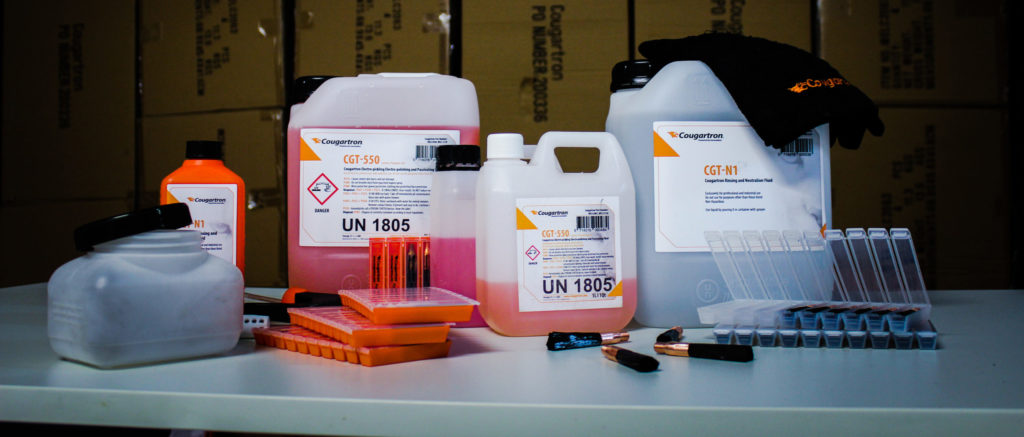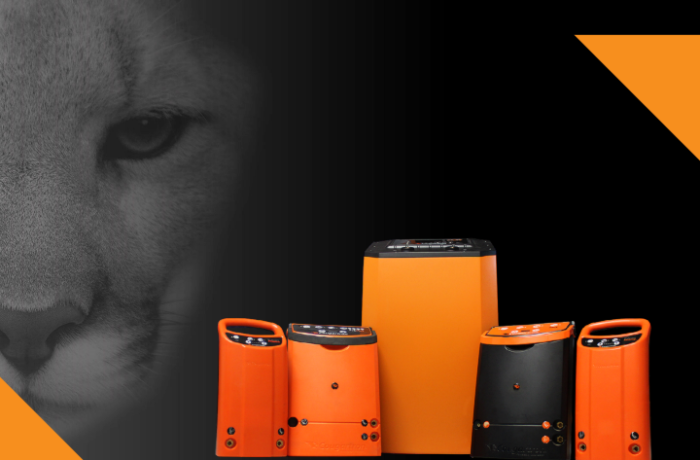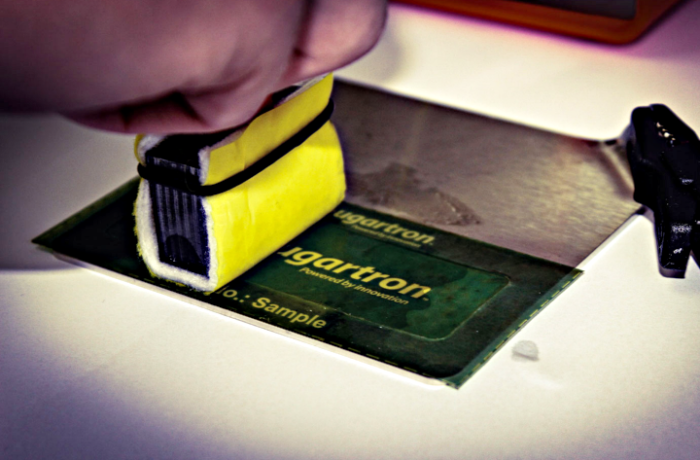Financial Benefits of Electrolytic Weld Cleaning and Marking
Marking & Etching | Weld cleaning | Wednesday, 10 June 2020
For most companies, navigating financial challenges has become particularly difficult in the midst of the current Coronavirus crisis.
Metalworking and fabricating workshops are no exception.
As we approach full reopening, it is also a great opportunity to revisit existing production methods and find new cost-effective techniques.
Given its effectiveness and affordability, the electrochemical method of weld cleaning and passivation imposes itself as the perfect solution.

Here is how.
Initial investment of the equipment
Equipment for electrolytic weld cleaning and marking always comes as a real benefit when considering the many advantages of this method.
Compared to some DIY solutions and alternative brands, Cougartron machines can seem like a hefty investment but this cannot be further from the truth given their quality, longevity, and minimal maintenance costs.
When it comes to weld cleaning, the initial investment in electrolytic equipment is much more beneficial when the risks and disadvantages of alternative methods are taken into account.
For example, the use of pickling paste often requires a costly setup of the work environment and wastewater collection and disposal due to the toxic nature of the product.
Manual grinding undoubtedly involves a smaller initial investment, but the risk of improper work is much higher – we will describe this problem in more detail later.
As for marking, we recently did a comparison of different methods and concluded that electrolytic marking involves much less initial investment than the other methods.
Recurring costs

Recurring costs associated with electrolytic weld cleaning and marking are also kept to a minimum.
When it comes to weld cleaning, we are mainly considering consumables such as weld cleaning brushes and fluids with the addition of brush accessories or spare parts.
Your recurring costs ultimately depend on the nature of your projects and several key factors such as the scope of work and characteristics of your welds.
Nevertheless, we did a few basic calculations with the help of average figures associated with the use of our popular weld cleaning consumables – Powerbrush weld cleaning brush and CGT-350 weld cleaning fluid. The results can be found here and will certainly help in more accurately determining your budget.
Marking consumables vary slightly and mainly involve marking fluids and stencils.
Effectiveness & Efficiency
When applied in the right way, the electrolytic method is much more effective and efficient than all the alternatives – In the case of both weld cleaning and marking.
Combined with other factors, this method will give you the opportunity to complete your projects earlier and thus reduce your lead times which has a positive impact on your bottom line.
When it comes to cleaning welds, the removal of impurities takes place at almost the same speed when using electrolytic liquids and pickling paste. However, there is one big advantage in the case of electrolytic weld cleaning – cleaning and passivation of the surface take place simultaneously. The health and safety aspect must also not be ignored.
A similar case is with manual grinding. Among other disadvantages of this method, it does not offer automatic (re)passivation of the surface, which makes electrolytic cleaning much more effective. In the worst case, manual grinding will damage the surface of the steel – something that is not possible with our method.
Electrolytic marking is also an extremely fast process that produces clear, high-definition markings – with unquestionable operational flexibility. The combination of these factors makes it much more convenient than other methods – i.e. laser marking or engraving.
Preventing risks and higher costs in the long run
This point applies more to electrolytic weld cleaning than to marking.
The advantage of using a combination of electricity and electrolyte fluids when cleaning welds is the successful cleaning and passivation of the surface in one pass.
For stainless steel, this is of crucial importance.
Passivation restores the protective layer that protects the steel from corrosion and other types of contamination that may occur after the completion of the cleaning process. Other weld cleaning methods such as chemical pickling and mechanical grinding do not guarantee passivation, which in turn makes the steel less resistant to various types of corrosion and structural deterioration.
This mainly leads to two potential problems – unnecessary rework costs, structural and aesthetic problems due to the delivery of faulty products. In certain cases, the entire steel structure must be replaced if the uncontrolled spread of corrosion occurs.
To avoid these risks, it is best to get sound advice and use the method that gives you a practice job without unnecessary costs.
Here at Cougartron, we offer a wide range of products suitable for most applications that will help you increase your throughput, reduce production costs, save time, lower expenditure on consumables, and much more – with payback times as little as 1 week for some customers.


 English
English  English (US)
English (US)  German
German  Danish
Danish  Swedish
Swedish  French
French  Polish
Polish  Spanish
Spanish 

